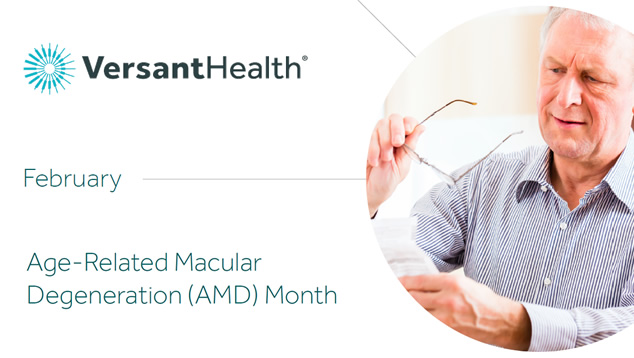Did you know that the TeamstersCare Notice of Privacy Practices describes your rights regarding your protected health information?
February 2024 is Age-Related Macular Degeneration (AMD) Month

Understanding AMD’s risk factors, symptoms, and treatments
What is AMD?
Age-related macular degeneration (AMD) is deterioration of the macula, which is the small central area of the retina of the eye that is responsible for sharp, central vision.
AMD has three stages:
- Early—Diagnosed by the presence of medium-sized, yellow deposits (known as drusen) beneath the retina that are about the width of an average human hair.
- Intermediate—Those at this stage will usually have large drusen, pigment changes in the retina, or both.
- Late—In addition to drusen, vision loss from damage to the macula will
What are the risk factors of AMD?
The biggest risk factor for macular degeneration is age. Your risk increases as you age, and the disease is most likely to occur in those 55 and older. You are also more likely to develop macular degeneration if you are overweight, smoke cigarettes, are Caucasian, are female, have a family history of macular degeneration and/or eat a diet high in saturated fat.
What are the symptoms of AMD?
Macular degeneration usually results in a slow, painless loss of vision. In the early stages, symptoms and signs of macular degeneration can go unnoticed, though some signs of vision loss from AMD can include:
- Gradual loss of ability to see objects clearly
- Straight lines look wavy or warped
- Loss of clear color vision
- A shadowy or empty area in the center of vision
How do you treat AMD?
There is currently no cure for AMD, though some treatments can delay its progression or even improve vision. That means it is important to catch AMD early. Regular comprehensive eye exams can help eye care professionals catch early signs of the condition before symptoms occur.
